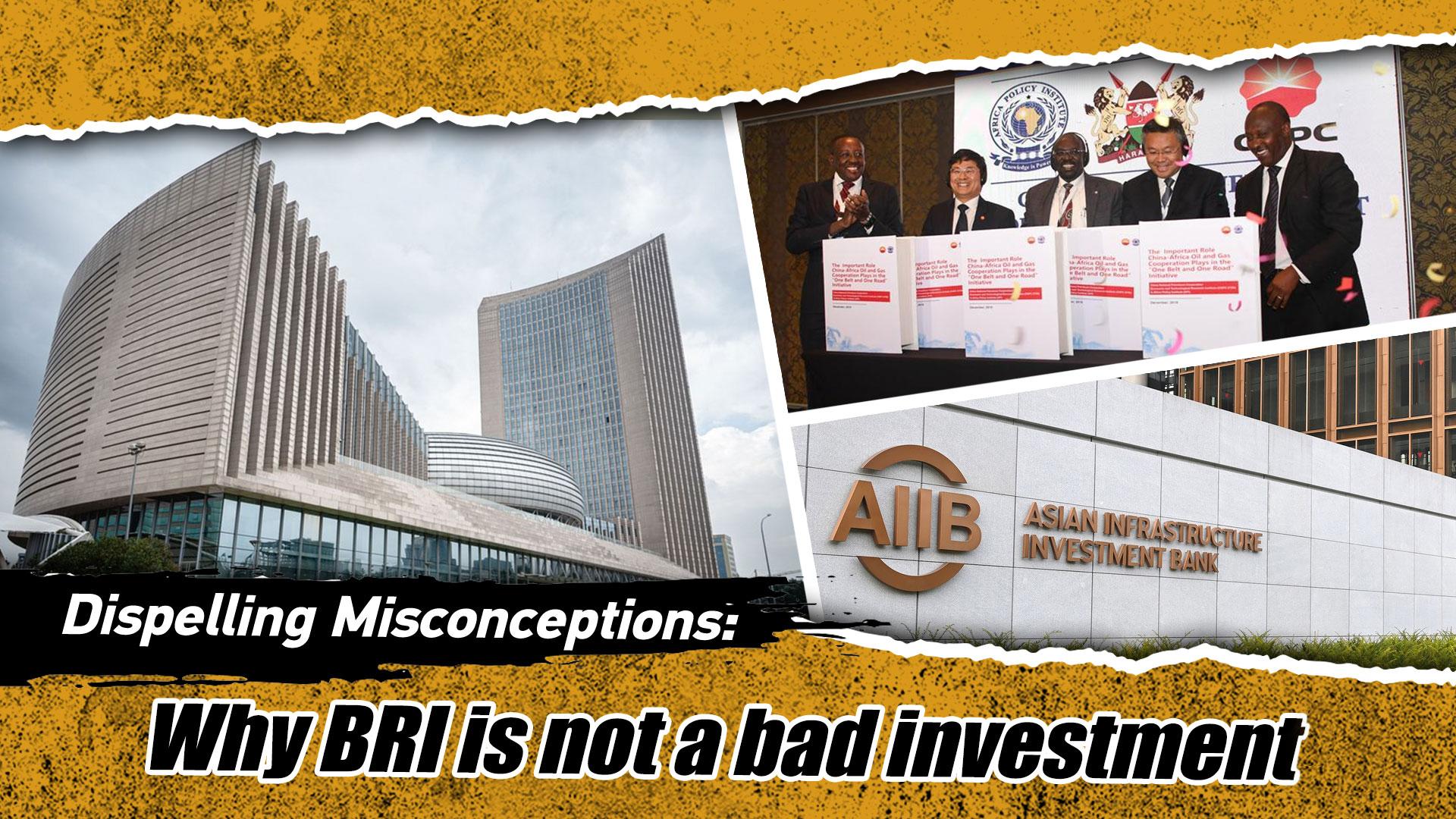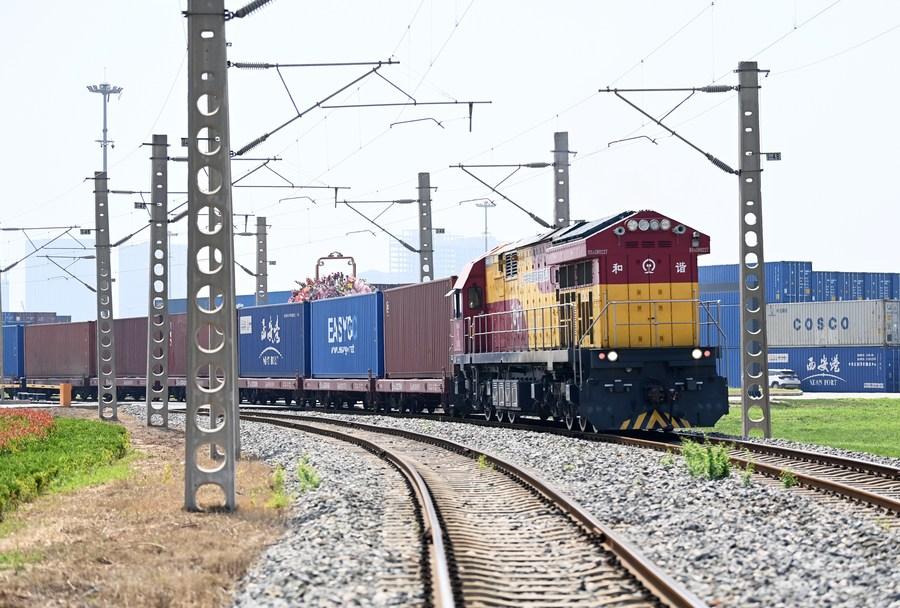
Editor's note: Since its proposal, some Westerners have never stopped discrediting the Belt and Road Initiative (BRI) in the past 10 years. Is the BRI predatory? Is it a geopolitical tool? Is the initiative a complete failure? Introduced at the BRI's 10th anniversary, Dispelling Misconceptions on BRI is an eight-part series debunking Western lies on the initiative. The fourth essay refutes the allegation of BRI as a bad investment.
Over the past decade, the Belt and Road Initiative (BRI) has gained worldwide traction and garnered overwhelming support from the international community. Having galvanized nearly $1 trillion of investment, the BRI has built numerous livelihood projects, developed massive infrastructure facilities and achieved milestones of cooperation.
However, some Westerners hype the BRI as a bad investment. "There are diminishing economic returns from investing in (BRI) projects overseas," a Bloomberg article quoted Jamus Lim, associate professor of economics at ESSEC Business School, Asia Pacific, as saying.
The reality looks different. The BRI is not for short-term gains, but for the long-term common good of all. In fact, as the mega-project evolves from broad strokes to refined details, the BRI, over the past 10 years, has become increasingly important, especially to developing countries in resource-poor regions. For these countries, BRI offers an opportunity to integrate into global supply chains, enhance capacity building in infrastructure, value-addition, technological innovation and product standards – thereby improving the operational capacities and competitiveness of businesses, including small and medium-sized enterprises. Ultimately, the change witnessed in developing countries drives economic transformation and builds robust economies.
For example in Kazakhstan, the largest economy in Central Asia, a World Bank report (2020) shows that BRI corridor routes are potentially "game changers" for the land-locked country. At present, BRI improvements in infrastructure have reduced Kazakh shipment time by more than 8 percent and trade cost by 4 percent. The impact of the improved infrastructure alone on Kazakh gross domestic product (GDP) is estimated at about 6.5 percent, while improving trade facilitation and reducing tariffs along the corridors will add around 15 percent.

A China-Europe freight train leaves for Kazakhstan from Xi'an International Port in Xi'an, July 29, 2022. [Photo/Xinhua]
Similar examples can be seen in Africa, which is home to the world's largest number of least-developed countries. For decades, Africa has been facing complex and formidable structural challenges that hinder sustainable growth and development. The BRI has breathed new life into various industries in the continent, steering African countries along a sustained path of growth, economic transformation and resilience. The BRI is increasingly central to national and concerted actions dedicated to tackling decades-long challenges and structural deficiencies, widely known as the reasons for low GDP growth and the slow pace of development.
For instance, Nigeria, as the continent's largest economy and most populous country, reaps increasing social and economic gains from several massive transport infrastructure facilities under the BRI. In January this year, Nigeria witnessed the opening of major BRI projects, including the first phase of the Lagos Rail Mass Transit Blue Line and the Lekki deep-water port. As the largest deep-water port in West Africa, Lekki deep-water port is expected to generate about $360 billion of economic value and create 170,000 jobs for Nigeria. This enhances Nigeria's capacity to process exports and imports.

Facilities at the Lekki deep seaport in Lagos, Nigeria. [Photo/Xinhua]
These are just a few examples at the national, regional and global levels of BRI cooperation providing opportunities for establishing and improving supply chains and production network systems. The initiative increasingly tackles structural deficiencies especially in the Global South across various sectors such as energy, transport, agriculture, and information and communications technology, addressing decades-long structural constraints that impeded growth, contributing in enhancing their capacities for growth, and providing new opportunities to achieve national development goals.
A World Bank report in 2019 shows that if fully implemented, the BRI transport projects could foster trade between 1.7 and 6.2 percent for the world, increasing global real income by 0.7 to 2.9 percent – lifting 7.6 million people from extreme poverty (people earning less than $1.9 a day) and 32 million people from moderate poverty (people earning less than $3.2 a day). According to a 2019 study from the London-based Centre for Economics and Business Research, the BRI is likely to boost world GDP by $7.1 trillion per year by 2040.
A progress report on the BRI in support of the United Nations 2030 Agenda for sustainable development, launched during the 77th Session of the General Assembly in the United Nations headquarters in 2022, shows that the China-led initiative is a highly valuable vehicle for accelerating implementation of the 2030 Agenda – proving effective in bridging various gaps in implementation efforts of the United Nations Sustainable Development Goals, including trade, policy coordination, financing, and infrastructure connectivity among others.
As a well-received international public good and an important platform for building a community with a shared future for mankind, the BRI accounts for colossal socio-economic gains. It provides more than enough evidence to prove that Western allegations about BRI's low rate of return do not hold water. Rather, the BRI is investing for the common development of international organizations and countries worldwide.
The author Alexander Ayertey Odonkor is a global economist with a keen interest in the social, environmental and economic landscape of both developing and developed countries, particularly in Asia, Africa and Europe.

 中文
中文



